In areas with heavy deer pressure, most gardeners know that tough and prickly needle-bearing shrubs are one choice they can make at the nursery that won’t end up as deer food. Coniferous shrubs like juniper are practically indestructible — few things in the natural world can phase them, even a herd of hungry deer. But as landscaping plants, they do leave something to be desired. Not that there is anything wrong with coniferous shrubs — many are quite beautiful — but they don’t make for much of a palette to work with on their own.
Evergreen shrubs are invaluable in the landscape for providing privacy and creating a sense of enclosure, not to mention creating winter interest. But there are a few other evergreen shrubs that resist deer beside the ubiquitous needle-bearing ones. Some of those below are extremely common, while others may be new discoveries for some gardeners. All have at least one redeeming aesthetic trait (besides being evergreen) and are great selections for any region in the U.S.
 1. Boxwood
1. Boxwood (
Buxus spp.)
Boxwood has been a popular landscape shrub for more than a thousand years. It’s featured prominently in traditional European garden designs, but it is equally at home in a modernist landscape. Prune this European native into any shape desired or leave it to grow in its shaggy, but naturally attractive, form. There are varieties for hedges from 10 inches to 10 feet tall. It is at its best in cool, humid climates.
Where it will grow: Hardy to minus 20 degrees Fahrenheit, or minus 29 degrees Celsius (USDA zones 5 to 9; find your zone)
Light requirement: Full sun or partial shade
Water requirement: Moderate
Mature size: Depends on variety
See how to grow boxwood
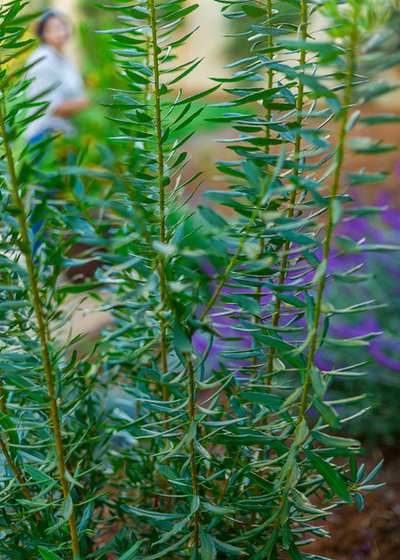
OASIS DESIGN
2. Wax Myrtle (
Myrica spp.)
Wax myrtles are a bit like North America’s version of boxwood. They have ultratidy evergreen foliage and can be sheared into a formal hedge. They also happen to have a wonderful spicy aroma and are one of the rare nonleguminous plants that add nitrogen to the soil. In the U.S. West, plant the native variety, Pacific wax myrtle (
M. californica), which is extremely drought-tolerant — unlike boxwood. In the East, southern wax myrtle (
M. cerifera)
is the native representative.
Where it will grow: Both species are hardy to 0 degrees Fahrenheit, or minus 18 degrees Celsius (zones 7 to 11)
Light requirement: Full sun or dappled shade
Water requirement: Minimal once established
Mature size: 8 to 12 feet tall
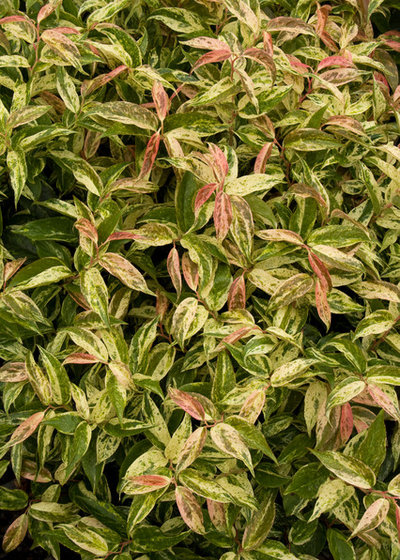
Monrovia
Rainbow Drooping Fetterbush
3. Doghobble (
Leucothoe spp.)
This is one of the most underappreciated plants in North America. Native to the East Coast, doghobble grows as a spreading shrub, forming a knee- to waist-high thicket of exquisite glossy green foliage with clusters of drooping white flowers. The branches have a graceful arching and swooping habit, especially when cascading down a hill. Doghobble is one of the best native species for erosion control in deeply shaded, north-facing hillsides. The variegated variety pictured here is called ‘Rainbow’.
Where it will grow: Hardy to minus 20 degrees Fahrenheit, or minus 29 degrees Celsius (zones 5 to 9)
Light requirement: Full or partial shade
Water requirement: Moderate
Mature size: 2 to 4 feet tall
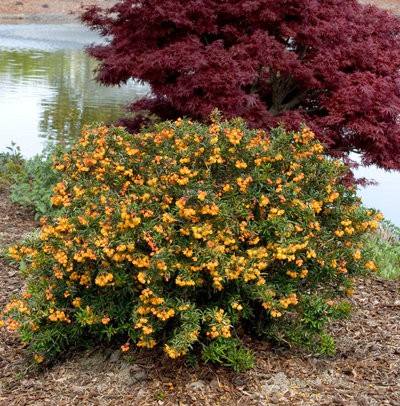
Monrovia
Dwarf Coral Hedge Barberry
4. Evergreen Barberry(
Berberis spp.)
Many gardeners know barberry only as a despised invasive plant, but that’s mainly an issue with Japanese barberry (
B.thunbergii), a deciduous shrub. Less known are the evergreen barberries, which do not have the same invasive tendencies. The variety pictured here is
B. x
stenophylla ‘Corallina Compacta’, which bears fiery flowers in spring and dark-colored berries in fall. Another evergreen barberry is
B. x
gladwynensis ‘William Penn’, which is known for its rust-tinged foliage in fall.
Where it will grow: ‘Corallina Compacta’ is hardy to minus 20 degrees Fahrenheit, or minus 29 degrees Celsius (zones 5 to 10); ‘William Penn’ is hardy to minus 10 degrees Fahrenheit, or minus 23 degrees Celsius (zones 6 to 9).
Light requirement: Full or partial sun
Water requirement: Moderate
Mature size: 3 to 4 feet for ‘Corallina Compacta’; 4 to 6 feet for ‘William Penn’
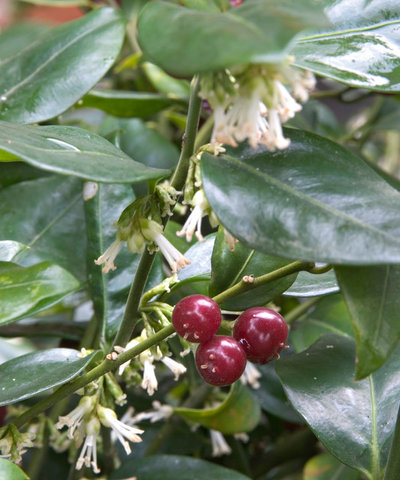
Monrovia
Fragrant Sweet Box
5. Sweet Box (
Sarcococca spp.)
This shrub closely resembles doghobble but isn’t native. It is, however, a better choice for the arid West. The white flowers are fragrant, and reddish berries appear in fall. Use it in deep shade where few other shrubs will grow.
Where it will grow: Varies by species, but most are hardy to Zone 7 or 8
Light requirement: Full or partial shade
Water requirement: Low
Mature size: 3 to 5 feet tall
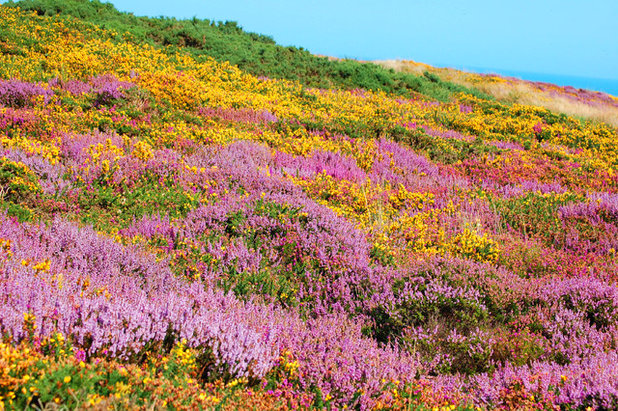
fisherbray
6. Heaths and Heathers (
Erica and Calluna spp.)
Heath and heather are distinct botanically, though in practice they are used somewhat interchangeably. Combined, they refer to a large, highly unusual group of prostrate shrubs with similar characteristics. All have wildly colorful flowers and scaly or needle-like leaves that take on colorful tones in cold weather. They prefer acidic soil.
Technically, heathers belong to the genus
Calluna, while heaths are in the
Erica genus. The former bloom primarily in summer and are adapted to northern climates, with some varieties that are hardy down to Zone 3. The latter bloom in late winter and are a better choice for Southern gardeners.
Where it will grow: Depends on variety
Light requirement: Full sun
Water requirement: Moderate
Mature size: 1 foot to 3 feet tall
Learn how to grow heather, seen here growing on a cliff north of Dublin, Ireland
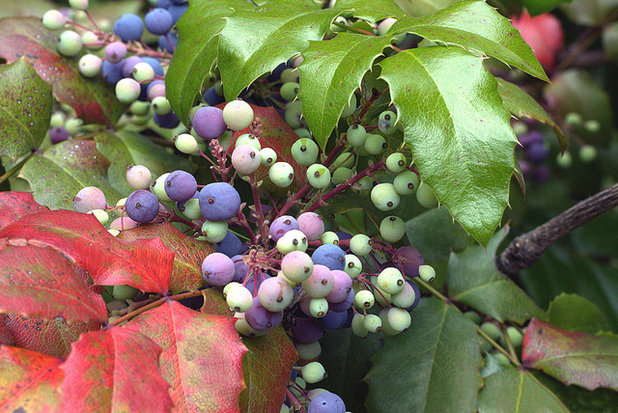 7. Oregon Grape
7. Oregon Grape (
Mahonia aquifolium)
This West Coast native is related to barberry and has similar yellow flowers in spring, followed by grape-like berries. Oregon grape has an unusual upright growth habit, with the foliage concentrated at the top of stout canes. There is a different but similar-looking species of Mahonia from China called leatherleaf mahonia (
M. bealei), which is highly invasive in the Southeast, but Oregon grape is well-behaved. Birds love the berries, but they can be poisonous to humans if too many are eaten uncooked.
Where it will grow: Hardy to minus 20 degrees Fahrenheit, or minus 29 degrees Celsius (zones 5 to 9)
Light requirement: Full sun or partial shade
Water requirement: Low
Mature size: 3 to 6 feet tall and 4 feet wide
See how to grow Oregon grape
Photo by Manuel
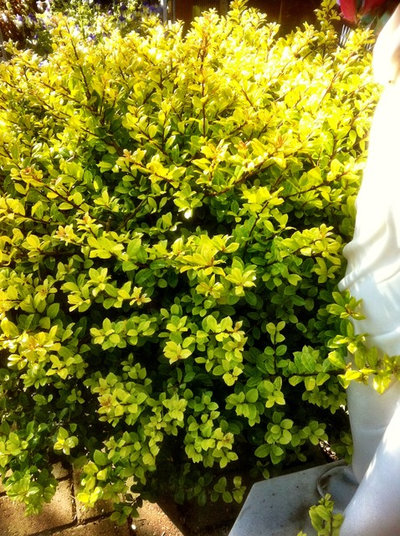 8. Holly
8. Holly (
Ilex spp.)
The vast majority of holly species are evergreen and deer-resistant. It’s a large group of shrubby plants with sizes to fit any garden. They are known for their prickly leaves and red berries, which persist well into winter. There are several species native to the eastern U.S., including American holly (
I. opaca) and yaupon holly (
I. vomitoria). Pictured here is a variety of Japanese holly (
I. crenata) known as ‘Little Gem’, which grows 8 to 12 feet and is hardy down to Zone 3.
Where it will grow: Varies by species
Light requirement: Full sun to partial shade
Water requirement: Moderate
Mature size: Varies by species





